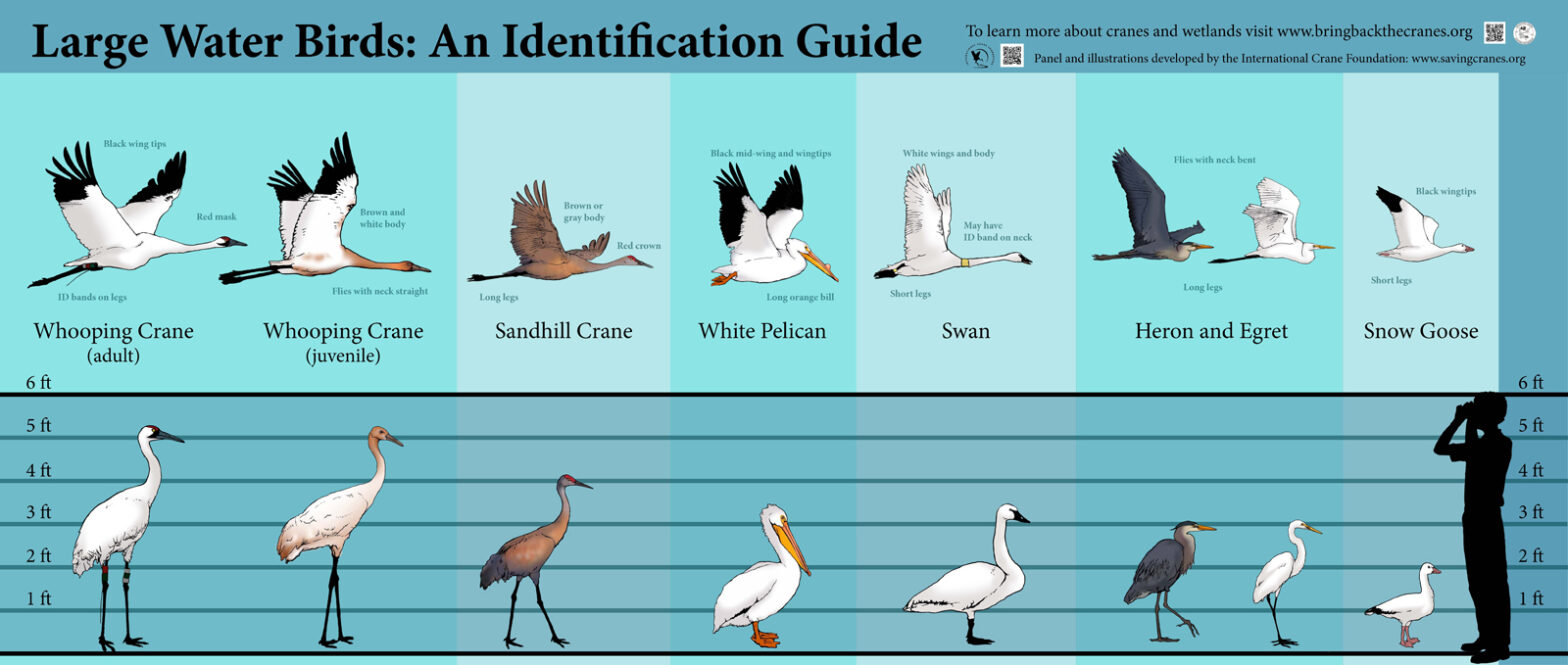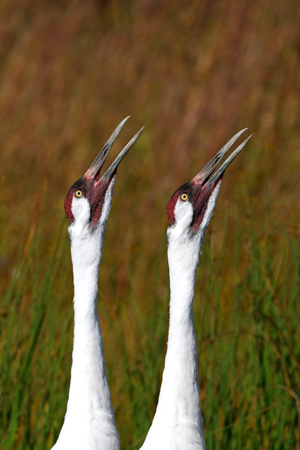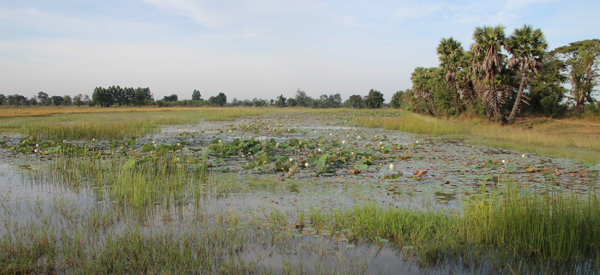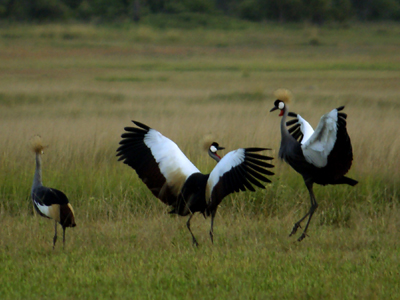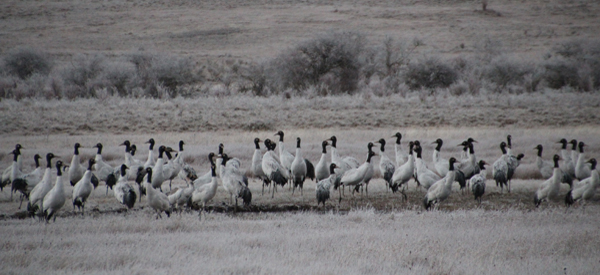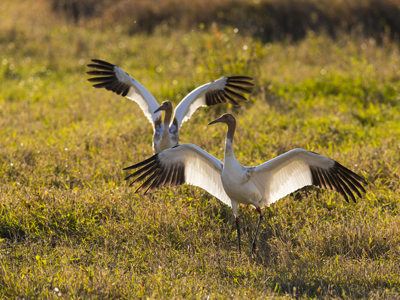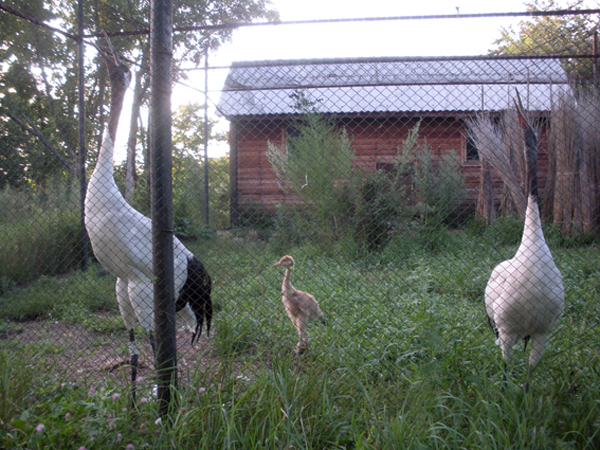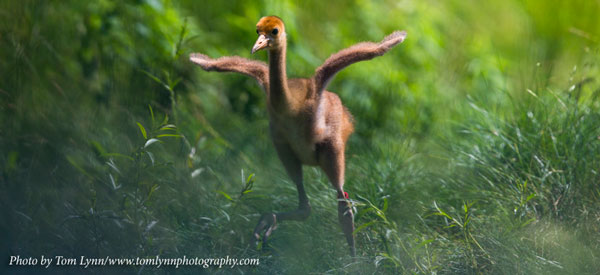
Wisconsin is home to a long legacy of ethical hunters and bird enthusiasts that dates back to before Aldo Leopold’s A Sand County Almanac of the mid-1900s. In the spirit of Leopold’s land ethic, we need your help.
Results for "❤️ Beste dating-werf: [url"
Notes from the President
 I would have failed photography school. Whenever I find myself in the exotic crane places of the world, I am flanked by photographers who are able to capture the elegance and excitement – the pure charisma – of cranes in the most breathtaking ways. My camera, however, tends to focus less on the dramatic beauty and more on the menacing threats to the crane world. A Blue Crane roosting under a big, ugly powerline – click! A Wattled Crane struggling to feed on a parched, dusty floodplain – snap!
I would have failed photography school. Whenever I find myself in the exotic crane places of the world, I am flanked by photographers who are able to capture the elegance and excitement – the pure charisma – of cranes in the most breathtaking ways. My camera, however, tends to focus less on the dramatic beauty and more on the menacing threats to the crane world. A Blue Crane roosting under a big, ugly powerline – click! A Wattled Crane struggling to feed on a parched, dusty floodplain – snap!
Notes from the President
 Midway along our journey from New Delhi to Bharatpur, we pulled our bus off the highway and leapt out to scan for birds and other things that might flash in our binoculars and cameras. At first glance, these intensively farmed lands, flush with people everywhere, didn’t seem a good prospect for wildlife viewing. But as the small wetlands dotting this landscape came deeper into focus, species after species appeared — a wealth of ducks, cormorants, ibises, spoonbills, storks, herons, kingfishers, and shorebirds.
Midway along our journey from New Delhi to Bharatpur, we pulled our bus off the highway and leapt out to scan for birds and other things that might flash in our binoculars and cameras. At first glance, these intensively farmed lands, flush with people everywhere, didn’t seem a good prospect for wildlife viewing. But as the small wetlands dotting this landscape came deeper into focus, species after species appeared — a wealth of ducks, cormorants, ibises, spoonbills, storks, herons, kingfishers, and shorebirds.
Whooping Cranes Need Your Voice
 The International Crane Foundation (ICF) is deeply concerned about the recent reports of Whooping Cranes being shot in Kentucky and Louisiana, adding to the frightening series of shootings of these highly endangered birds.
The International Crane Foundation (ICF) is deeply concerned about the recent reports of Whooping Cranes being shot in Kentucky and Louisiana, adding to the frightening series of shootings of these highly endangered birds.
Travels with George: Thailand Fall 2013
 Mid-morning, November 25, Thai colleagues and I are observing a pair of yearling Eastern Sarus Cranes digging and swallowing large sedge tubers from a harvested rice paddy near the Jorakae Non-hunting Area. To farmers, the sedges are weeds and thus killed by herbicides. So perhaps the cranes are, in a small way, helping the farmers. Suddenly an elderly man appeared riding a bicycle along the dirt road. His name was Mr. Nhu Pogang, and he has been a resident of this area for all of his 83 years. In his youth, the region was mostly forested with open wetlands in low-lying areas and cranes were common.
Mid-morning, November 25, Thai colleagues and I are observing a pair of yearling Eastern Sarus Cranes digging and swallowing large sedge tubers from a harvested rice paddy near the Jorakae Non-hunting Area. To farmers, the sedges are weeds and thus killed by herbicides. So perhaps the cranes are, in a small way, helping the farmers. Suddenly an elderly man appeared riding a bicycle along the dirt road. His name was Mr. Nhu Pogang, and he has been a resident of this area for all of his 83 years. In his youth, the region was mostly forested with open wetlands in low-lying areas and cranes were common.
The EWT and ICF Celebrate 40 Years of Saving Cranes and Communities
 The Endangered Wildlife Trust (EWT) and the International Crane Foundation (ICF), who have been cross-continental partners since 1994, both celebrated 40 years of pioneering conservation action in 2013. The EWT’s African Crane Conservation Programme (EWT-ACCP) and the ICF formalized their working arrangement in 2006, and since then the partnership has gone on to deliver real and positive impacts on the status of cranes and communities across the African continent.
The Endangered Wildlife Trust (EWT) and the International Crane Foundation (ICF), who have been cross-continental partners since 1994, both celebrated 40 years of pioneering conservation action in 2013. The EWT’s African Crane Conservation Programme (EWT-ACCP) and the ICF formalized their working arrangement in 2006, and since then the partnership has gone on to deliver real and positive impacts on the status of cranes and communities across the African continent.
Travels with George: Bhutan Fall 2013
 Since late October, the numbers of Black-necked Cranes in the Phobjika Valley, Bhutan have increased as more birds made their migration over the Himalayas. By November 11, the date of the Fourth King’s Birthday and of the Crane Festival within the courtyard of the Gangtey Gompa (16th century Buddhist temple), there were 262. When I returned on November 19, there were about 350, about 10 percent of which were juveniles, an indication that all is well on the breeding grounds in Tibet. More cranes are expected. Last winter the highest count in the valley was 368. This winter we hope the number exceeds 400!
Since late October, the numbers of Black-necked Cranes in the Phobjika Valley, Bhutan have increased as more birds made their migration over the Himalayas. By November 11, the date of the Fourth King’s Birthday and of the Crane Festival within the courtyard of the Gangtey Gompa (16th century Buddhist temple), there were 262. When I returned on November 19, there were about 350, about 10 percent of which were juveniles, an indication that all is well on the breeding grounds in Tibet. More cranes are expected. Last winter the highest count in the valley was 368. This winter we hope the number exceeds 400!
Young Whooping Cranes Begin Fall Migration
![]() Nineteen young Whooping Cranes are winging their way south on their first fall migration. This is the 13th group of birds to take part in the project led by the Whooping Crane Eastern Partnership (WCEP), a coalition of public and private groups that is reintroducing this highly imperiled species in eastern North America, part of its historic range.
Nineteen young Whooping Cranes are winging their way south on their first fall migration. This is the 13th group of birds to take part in the project led by the Whooping Crane Eastern Partnership (WCEP), a coalition of public and private groups that is reintroducing this highly imperiled species in eastern North America, part of its historic range.
The Transformation of a Red-crowned Crane

In 2011 a pair of Red-crowned Cranes kept at Muraviovka Park laid their first eggs! We had been waiting for this day for a few years. The male, Kivili, was four years old in 2008, when a one-year old female, Oka, arrived.
ICF's Whooping Crane Chicks Cast for Critical Role in the Wild
 The International Crane Foundation (ICF) has nine Whooping Crane chicks for this year’s Direct Autumn Release (DAR) Program, a release method that relies on older Whooping Cranes to lead the chicks south in the fall. ICF is one of only five captive breeding centers in the world focused on raising endangered Whooping Cranes for release into the wild.
The International Crane Foundation (ICF) has nine Whooping Crane chicks for this year’s Direct Autumn Release (DAR) Program, a release method that relies on older Whooping Cranes to lead the chicks south in the fall. ICF is one of only five captive breeding centers in the world focused on raising endangered Whooping Cranes for release into the wild.

